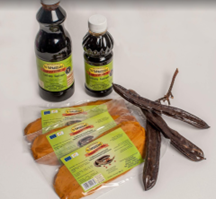2023 08 Cyprus - Mobility of Sweden School
- nicckolas44
- Sep 12, 2023
- 4 min read
Transnational mobility of pupil’s project funded by the European Social Fund within the framework of ERASMUS PLUS
Number of the project: 2023-1-SE01-KA122-SCH-000137285
Name of the project: Intercultural European Identity
TRAINING FOR STUDENTS IN CYPRUS
Intercultural European Identity - youth mobility
26th of August – 2 of September 2023
The implementation of Intercultural European Identity, implemented by ACPELIA organization took place from 26th August until the 2nd of September in Cyprus.
This was a transnational mobility of pupil’s project funded by the European Social Fund within the framework of Erasmus+ attended by students from the school Gymnasieakademin in Göteborg, Sweden. The program manager was Nikolas Nikolaou, and the students were guided by Boghos Avetikian.
Day 1
27 August

The day began with the students being taken to the center square of Pissouri village, where they were split into 4 groups, with a treasure hunt sort of game being taken place. Students were tasks important landmarks in Pissouri, such as the oldest Inn, or the most important monuments and what they represent.
After finishing the hunt, and learning more about the village, the student had a nice cup of coffee and were taken back to the accommodation.
The afternoon was comprised of traditional games being played at the beach at Pissouri. These included the classic “mantili” as well as other games based around delivering water in teams.
Lastly the night ended with competitive card games, particularly UNO Flip, which seems to have become a fan favorite among the students.
Day 2
28 August
Monday morning because with a visit to a goat farm in Pissouri, where students saw firsthand how goats are managed, milked, raised as well as bred. The goat farm is a great representation of a traditional occupation in a Cypriot village.
Students also had the opportunity to try milking a goat for themselves as well as feeding a very cute baby sheep that lived in the farm. Lastly, students had the opportunity to try fresh warm halloumi produced from the very goats they saw.
Right after, the students had the opportunity to see how Cyprus is moving slowly towards renewable energies, by seeing a huge photovoltaic park in the area of Pissouri.

Lastly, students also visit Παστελλοποίειο «Το παραδοσιακό», a small family business and local history museum of products made from carob. There we learned about the numerous awards the business has won, as well as all the healthy properties and benefits products made out of carob offers to the human body.
During the night, the students once again visited the center of Pissouri, to see what a typical night is like in a village as beautiful as Pissouri.
Day 3
29 August
The morning of the 29th started with a 2 hour challenging, yet beautiful hiking trail that begins from the end of the main beach of Pissouri. This showcased the beauty that Cyprus offers what it comes to natural and preserved hills and mountains by the sea.
In the afternoon, we were headed for Paphos, but first dropped by at Petra tou Romiou, also known as Aphrodite’s Rock. The students learned about the significance of the place as well as the history behind it, that being the legend that the Ancient Greek Goddess of Love and Beauty Aphrodite, was born from the sea foam at this specific place.
Moreover we also visited The Tomb of Kings in Paphos. This is the large necropolis which, since 1980, is a UNESCO World Heritage Site. The students learned how the tombs were actually known and explored as far back as the late 1700s, or how many of the tombs were assumed to have lots of expensive grave goods, which have likely been stolen.

Lastly, the student had the opportunity to visit the second UNESCO World Heritage Site in Paphos, the Paphos Mosaics. Here they learned about how the intricate floor mosaics depict various scenes from Greek Mythology. A particular favorite was the floor mosaics at the House of Dionysos.

The students were then given free time to enjoy the city of Paphos.
Day 4
30 August
Much like the day before, students had the opportunity to learn about heritage sites, but this time the ones towards Limassol. First the students visited Kourion, the ancient theatre. The student learned about how Kourion was an important city-kingdom in antiquity and how it was constructed as early as the 2nd century BC but modified to its current form in the 2nd century AD. Kourion also has an area with mosaics as well, which the students had an opportunity to look at.

The students then had the opportunity to see medieval Limassol Castle. The students learned how its current form was built in 1590 during the Ottoman rule, as well as how it served to protect the port from ongoing continues attacks. Afterwards free time was given for exploring the city of Limassol.
After arriving back to the accommodation in Pissouri, people were competitive with lots of card games.
Day 5
31 August
After checking out from the accommodation at Hylatio Tourist Village, the students had a long journey all the way to Protaras, where after arriving to the hotel, the students had the opportunity to explore the small town. Moreover, they tried many water sport activities in both the beaches of Sunrise and Fig Tree bay.

Day 6
1 September
For the final day of the project, the students received their certificates as well as a gift bag, graciously provided by the community council of Pissouri, which included herbal teas, as well as olive oil, which Cyprus is known for.
To celebrate, the students visited the resort town of Agia Napa in the evening, where they enjoyed the party vibe the city famously offers.








































































































































Comments